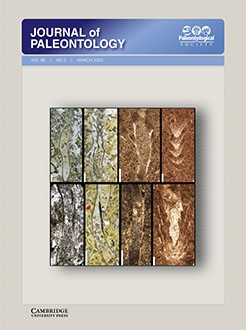Borings and bite marks on fossil turtle carapaces and plastra from the Miocene Moghra Formation, northern Egypt, are herein described. All fossil turtle material from Moghra exhibits ichnofossils. The positions of invertebrate borings on external surfaces of tortoise and turtle shell material at Moghra are consistent with the activities of ectoparasites or mesoparasites.
A single invertebrate ichnotaxon, Karethraichnus lakkos Zonneveld et al., 2016, occurs on Moghra tortoise fossils. This trace fossil was likely emplaced by ixodid arthropods (ticks). Bite marks assigned to Nihilichnus occur on a carapace peripheral and are interpreted to reflect postmortem scavenging. An abundant and moderately diverse assemblage of invertebrate borings characterizes Moghra aquatic turtle shells. Karethraichnus lakkos and Thatchtelithichnus holmani Zonneveld et al., 2016 traces on aquatic turtles are interpreted to reflect leech and/or trematode parasitism. Gunnellichnus moghraensis (new ichnogenus new ichnospecies) and G. akolouthiste (n. isp.) likely reflect bacterial and/or fungal infections on aquatic turtle shells that rarely dried out.






